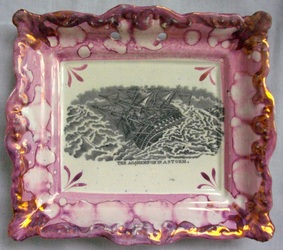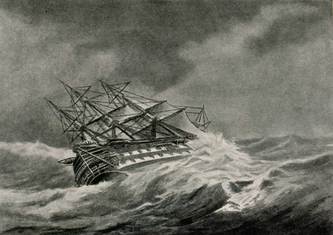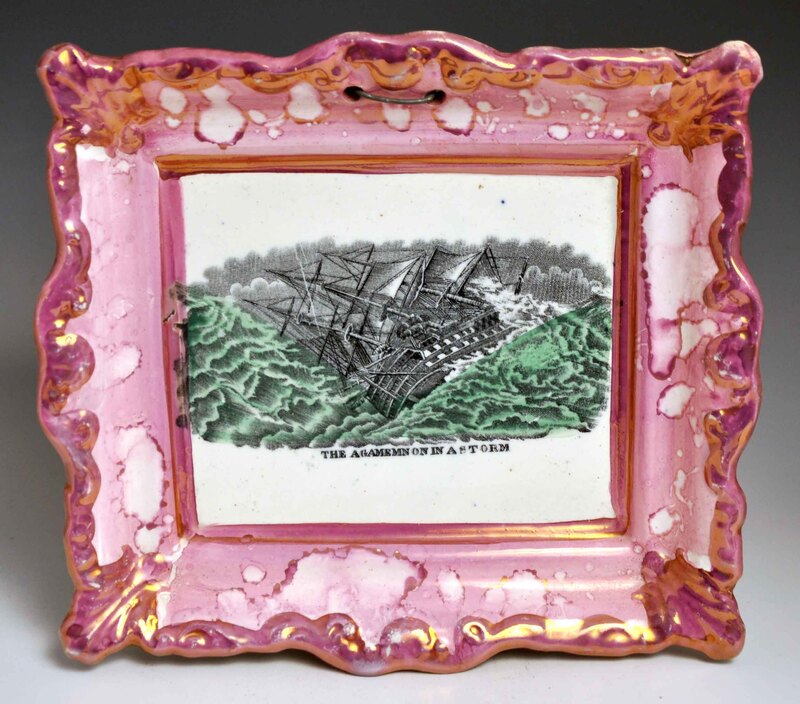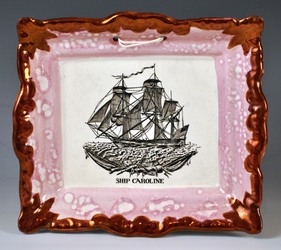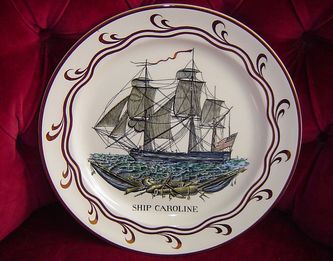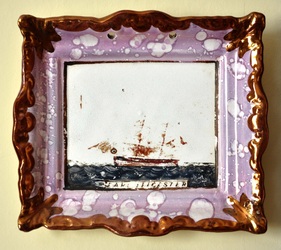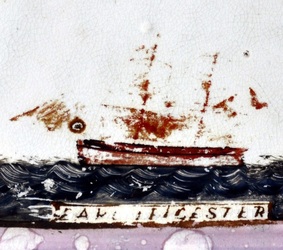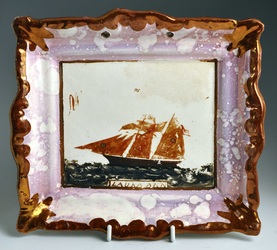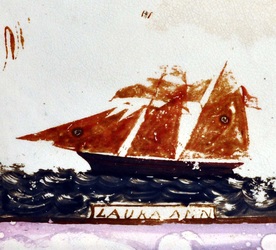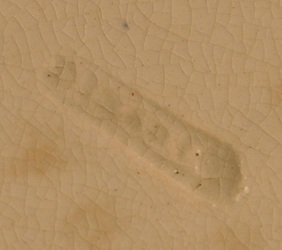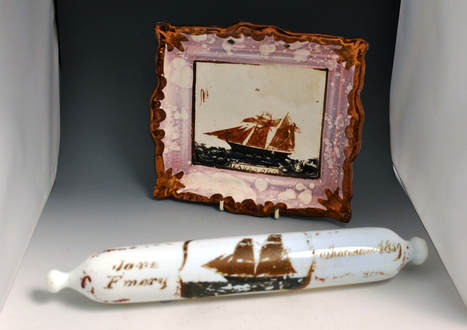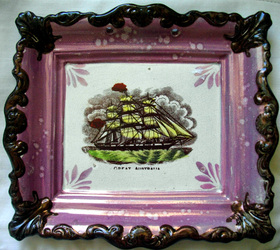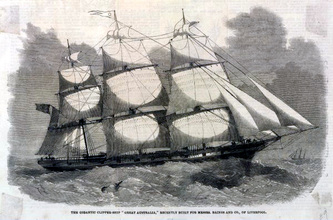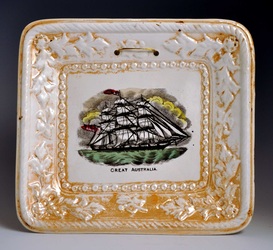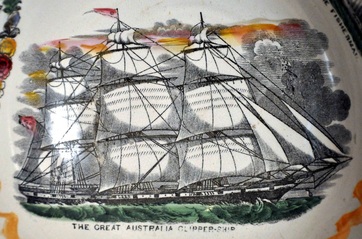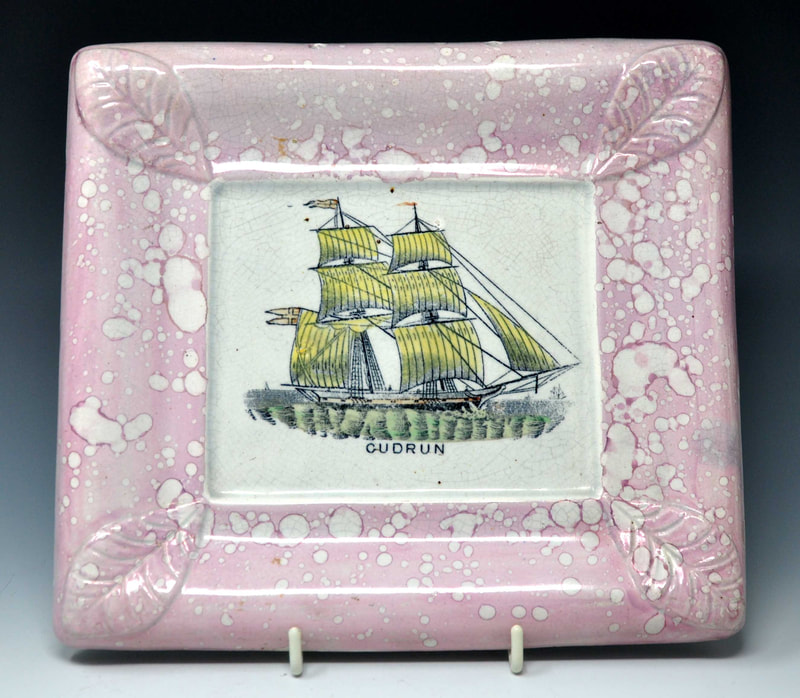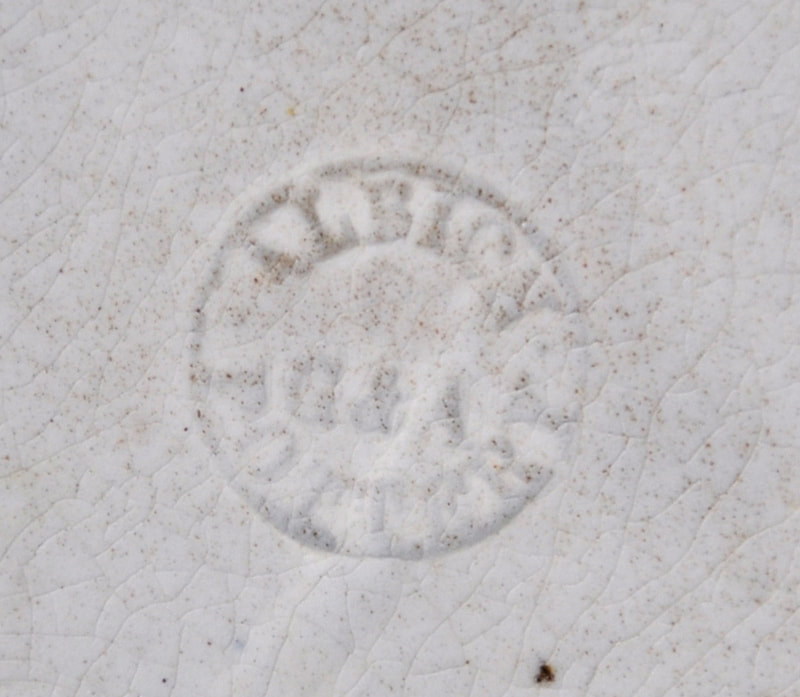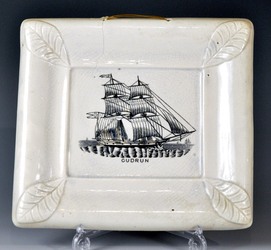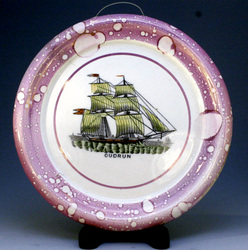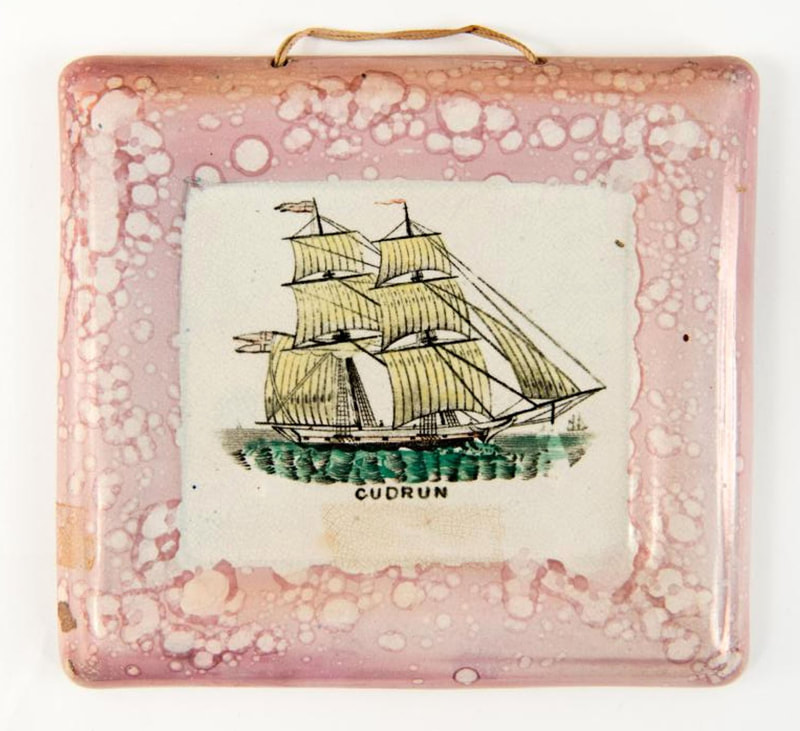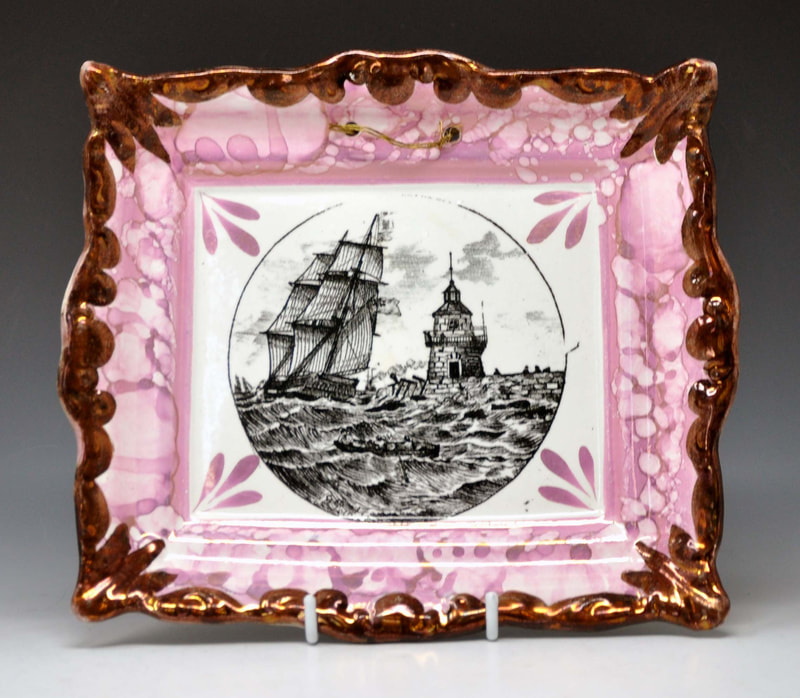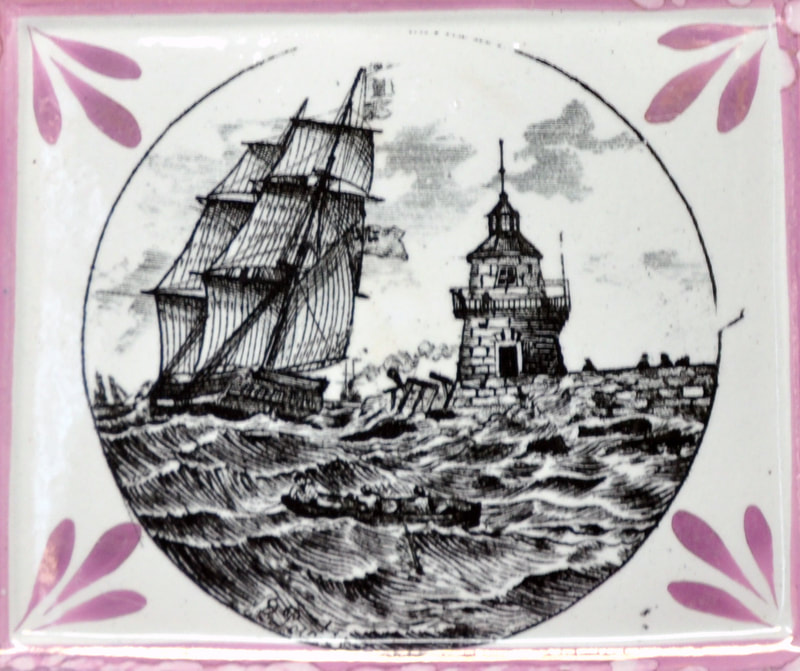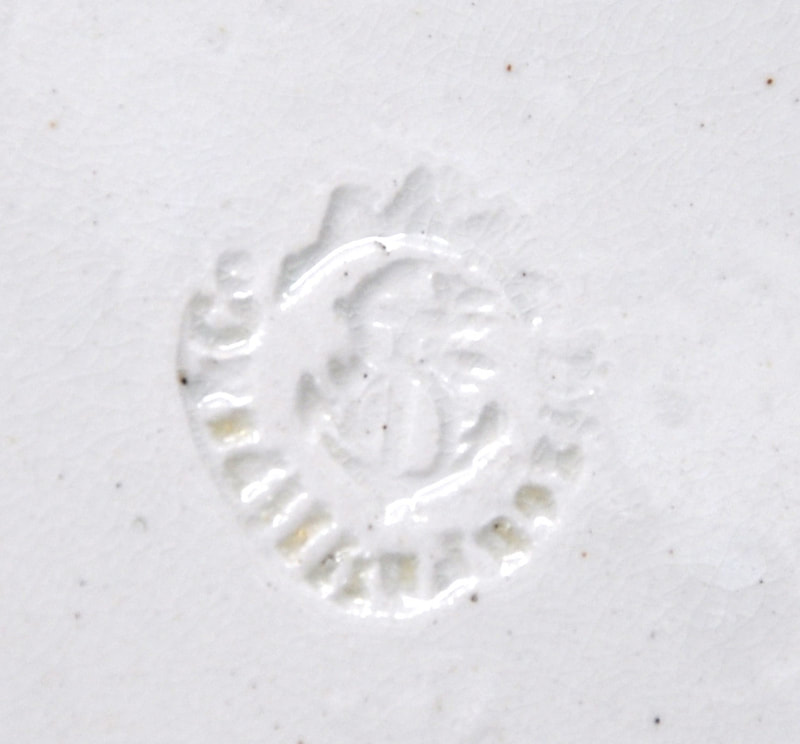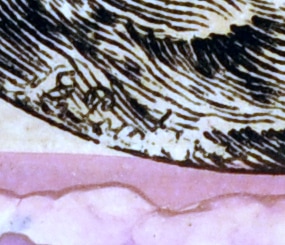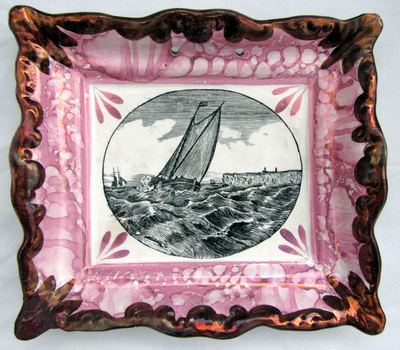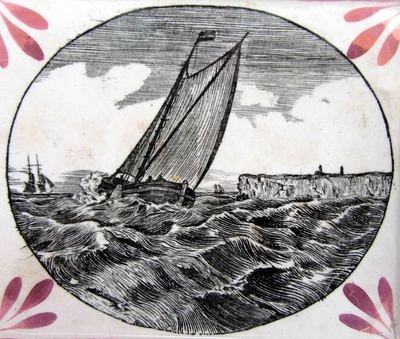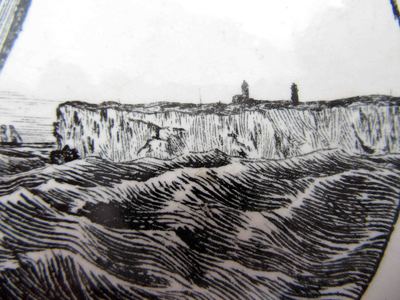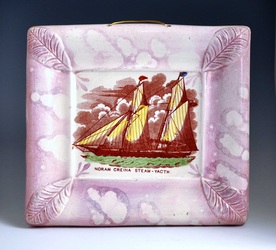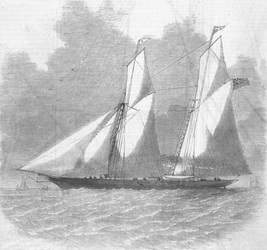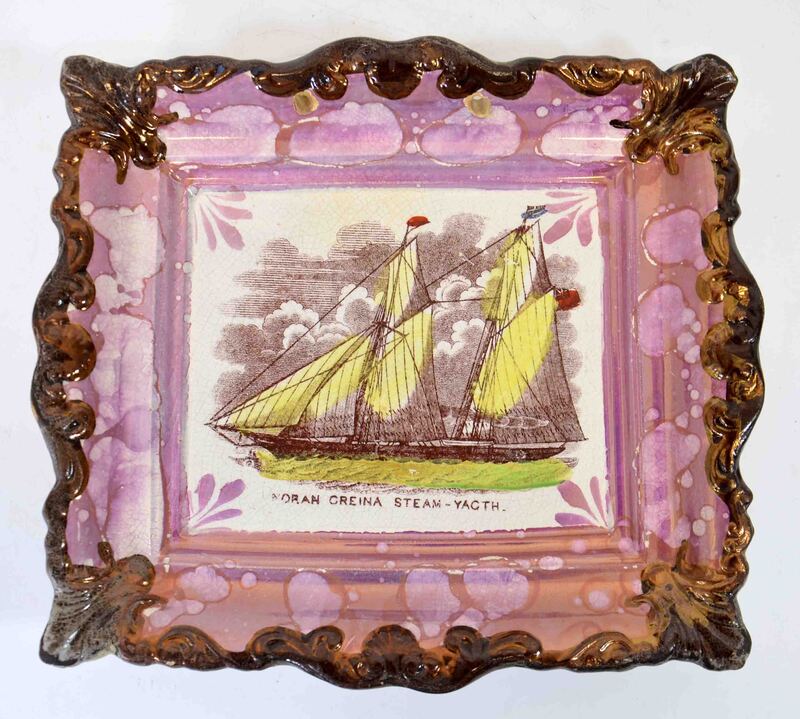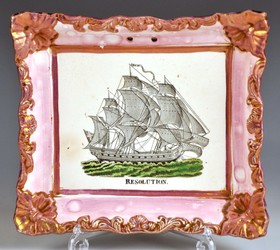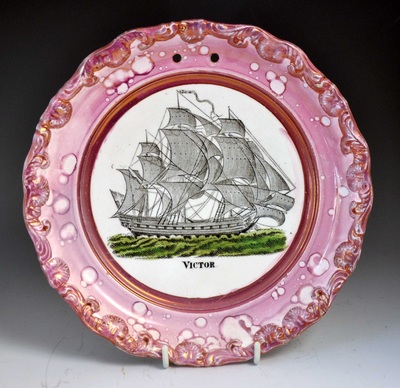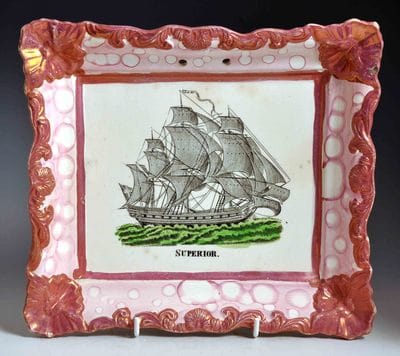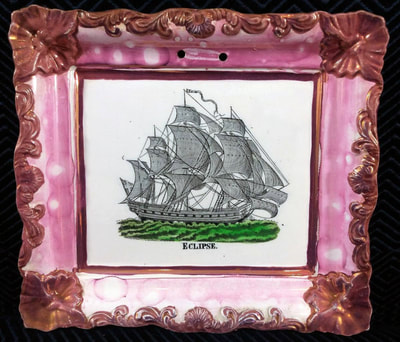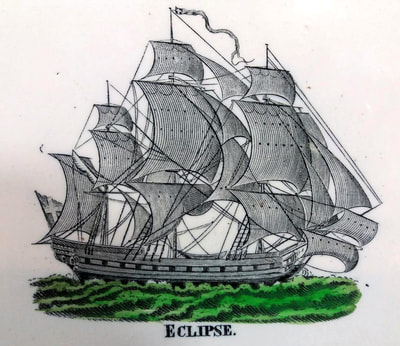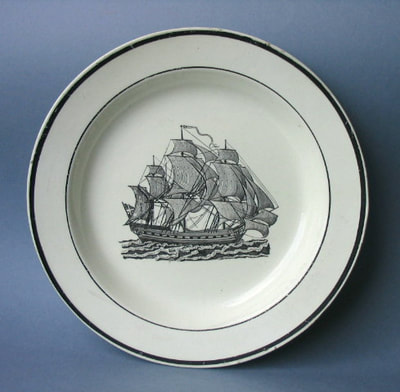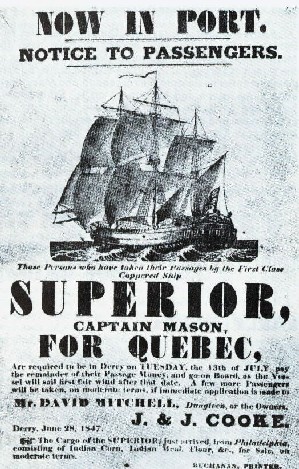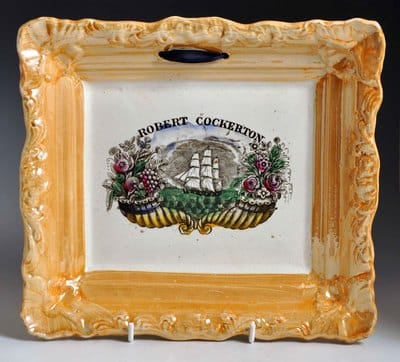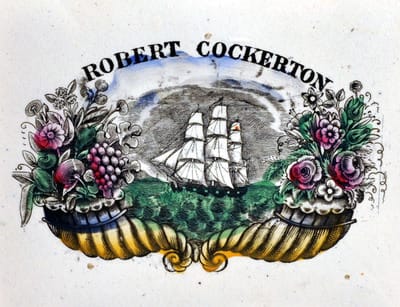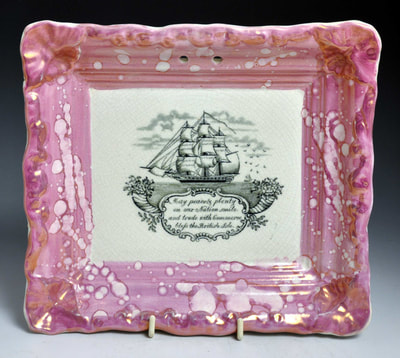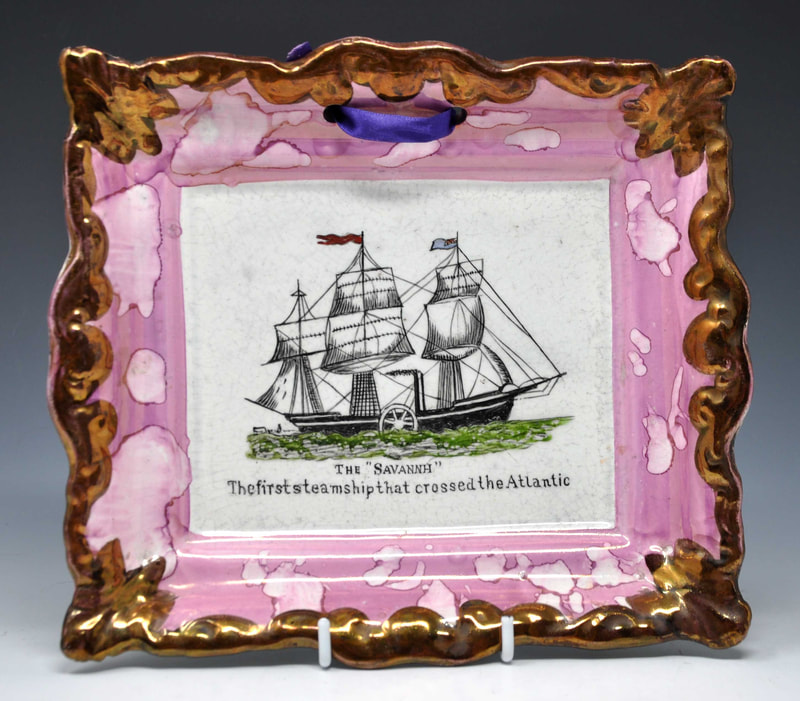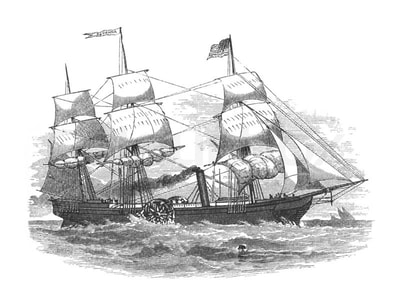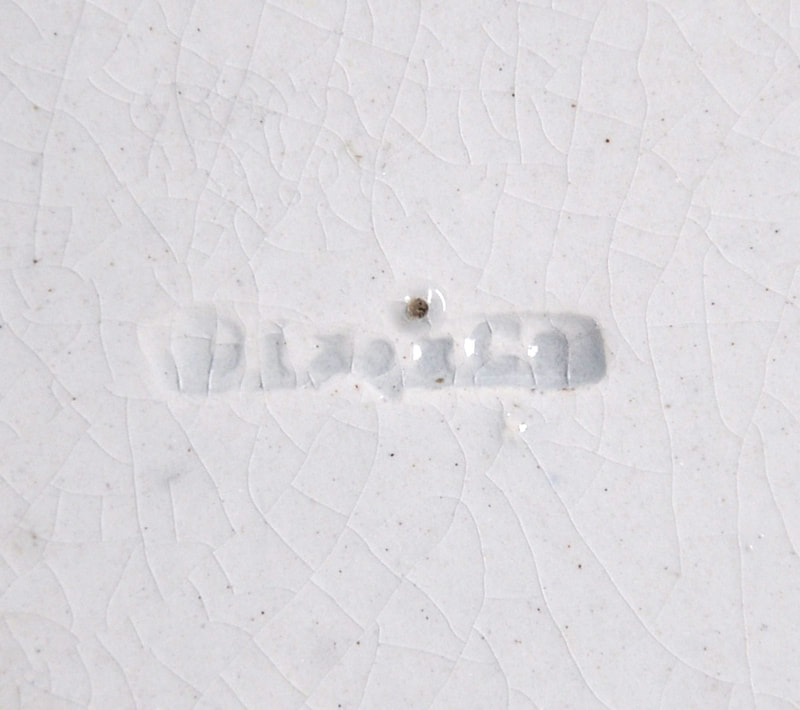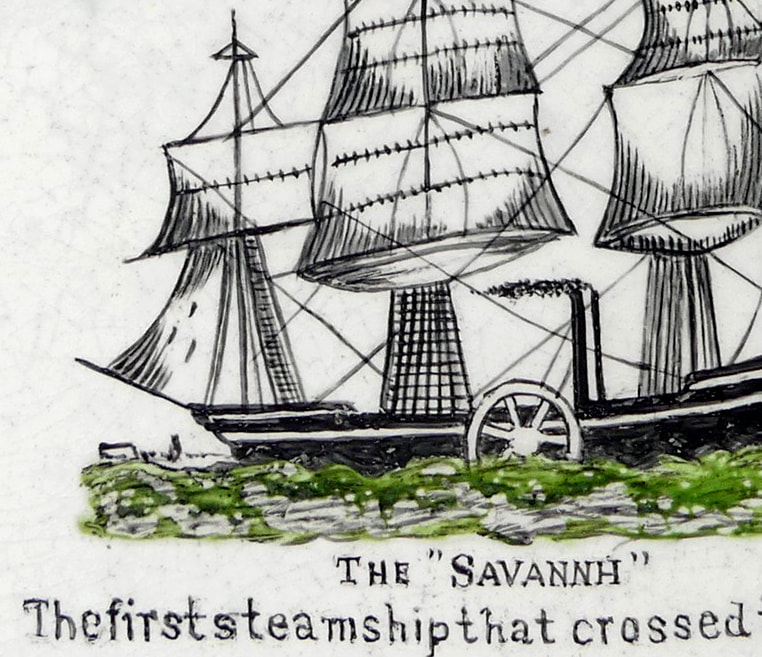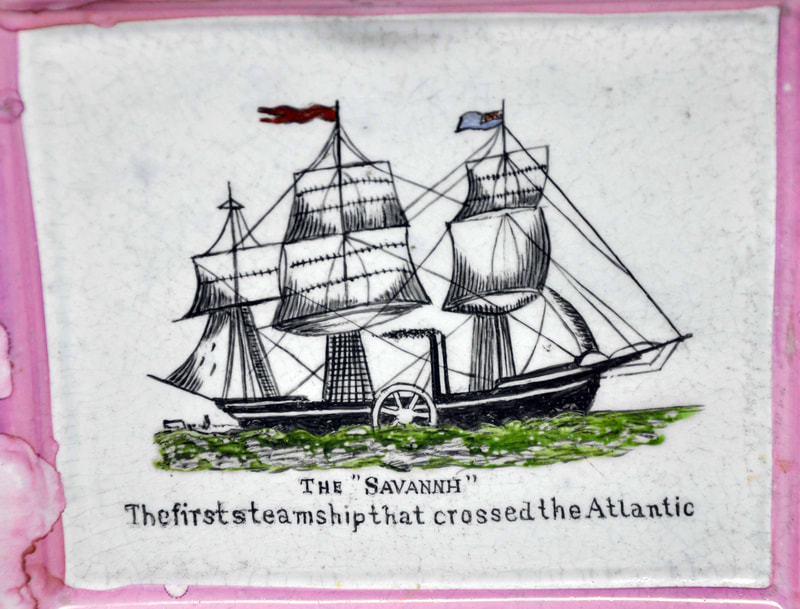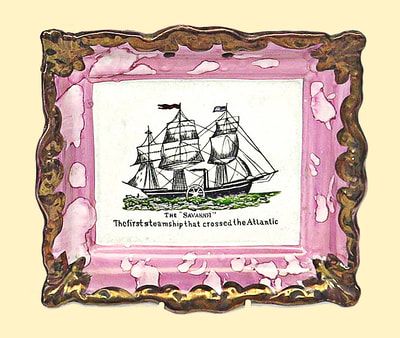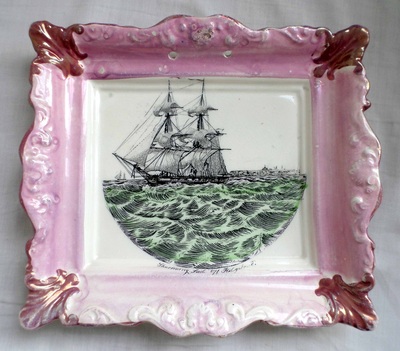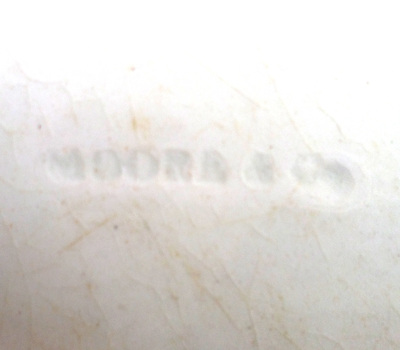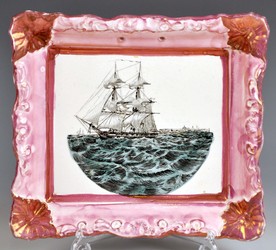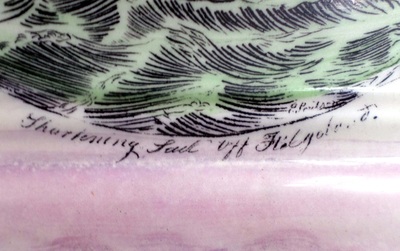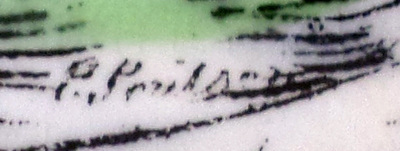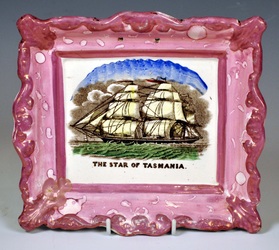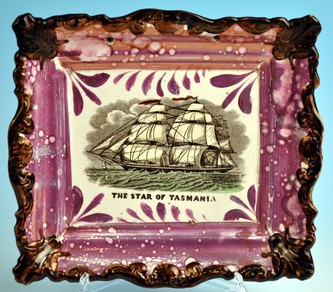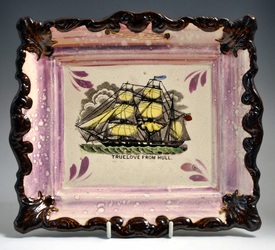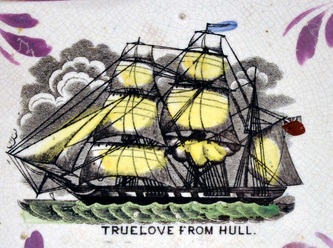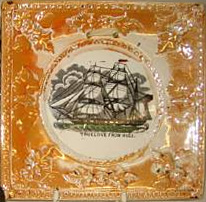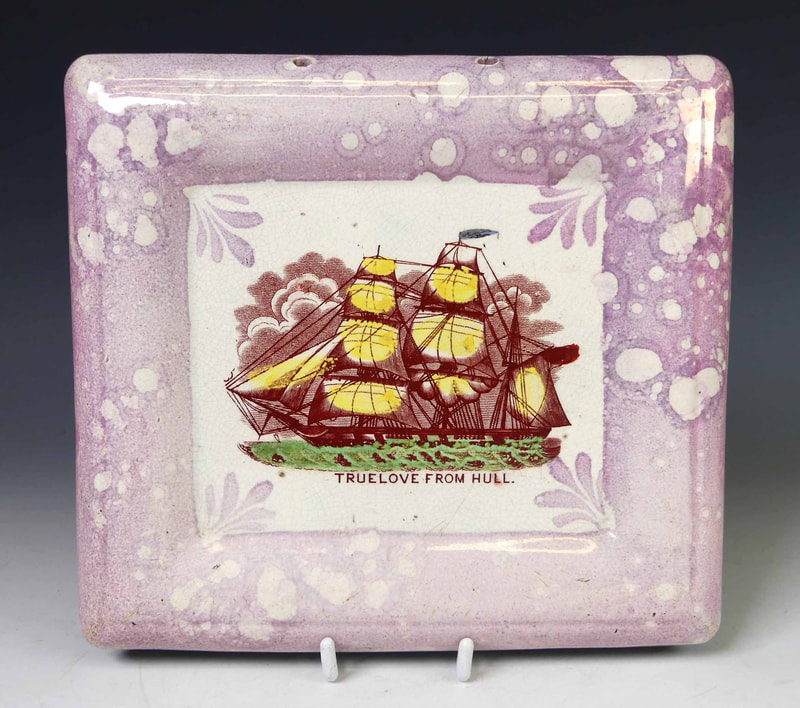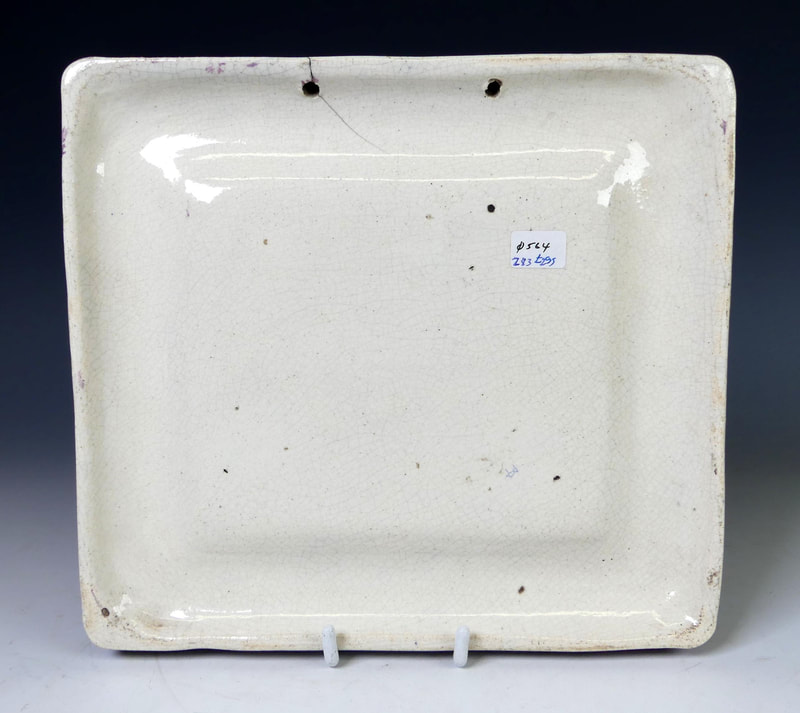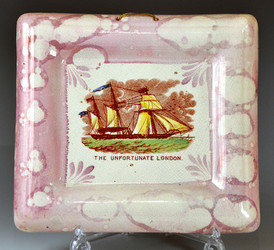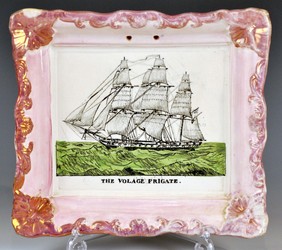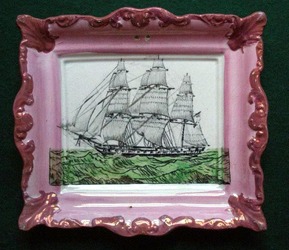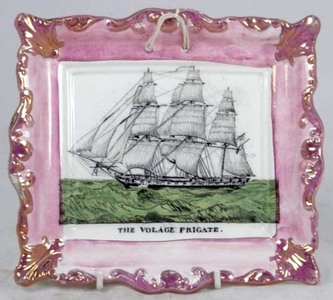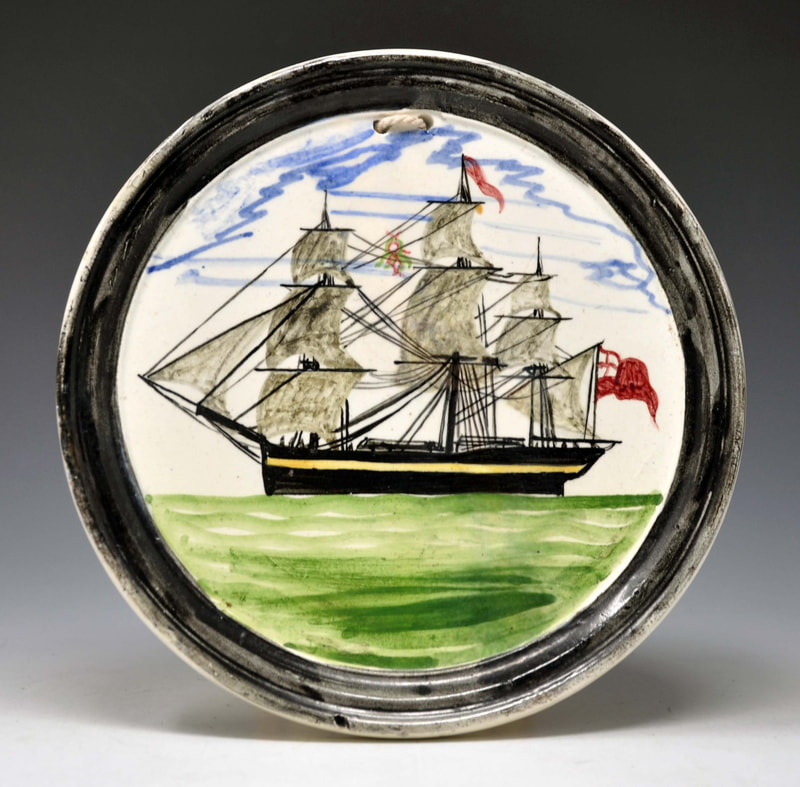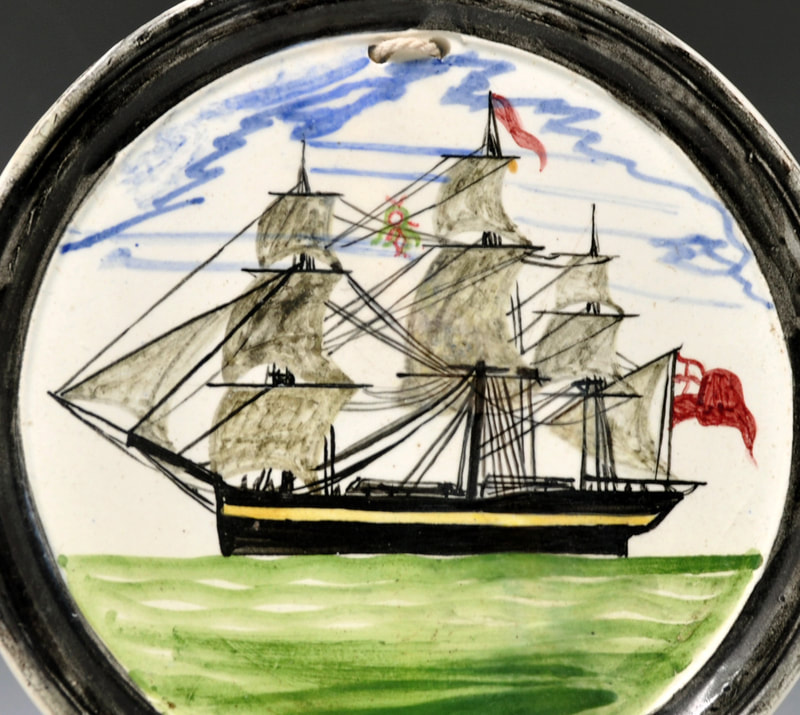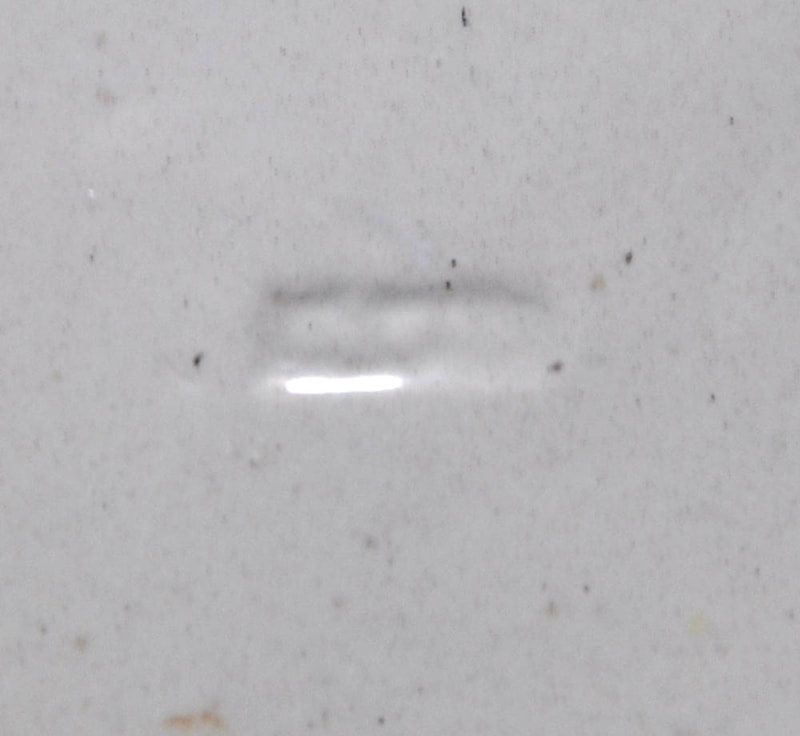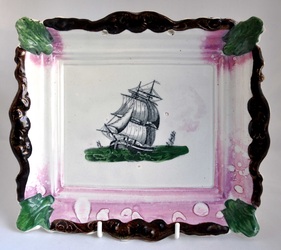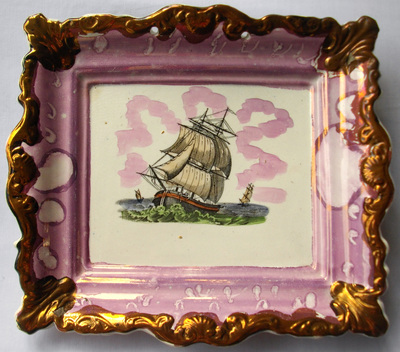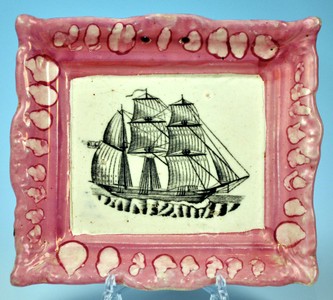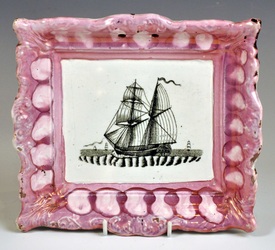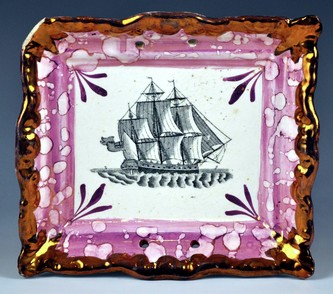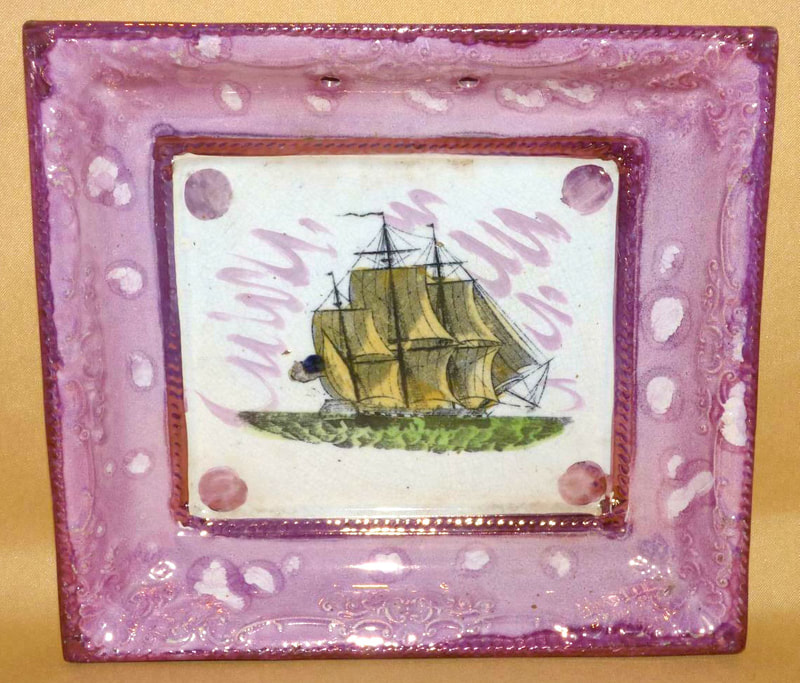Rare ship transfers
For an overview of maritime plaques, click on the Maritime heading above. Click on images to enlarge.
By rare I meant that I'd seen 3 or fewer of these transfers in my first 10 years of collecting. The transfers tend to be rarer because they were produced either relatively early (c1840s) or relatively late (c1870s), and their copper plates had less use. Some, like the Agamemnon in a Storm or the untitled ships at the end, are relatively common transfers on jugs and bowls, but very rarely appear on plaques.
The Agamemnon in a Storm (Garrison, Moore)
Caroline (Garrison)
Earl Leicester and Laura Ann (Garrison)
Great Australia (Moore, Scott)
Gudrun (Albion)
Lighthouses and ships (Garrison)
Norah Creina Steam-Yacht (Moore)
Resolution/Victor/Eclipse/Superior (Moore)
Robert Cockerton (Moore)
The "Savannah" The first steamship that crossed the Atlantic (Dixon)
Shortening Sail Off Helgoland (Moore)
The Star of Tasmania (Moore)
Truelove from Hull (Moore, Scott)
The Unfortunate London (Moore)
The Volage Frigate (Moore)
Unidentified ships (Newbottle, Carr, Dixon)
The Agamemnon in a Storm (Garrison, Moore)
Caroline (Garrison)
Earl Leicester and Laura Ann (Garrison)
Great Australia (Moore, Scott)
Gudrun (Albion)
Lighthouses and ships (Garrison)
Norah Creina Steam-Yacht (Moore)
Resolution/Victor/Eclipse/Superior (Moore)
Robert Cockerton (Moore)
The "Savannah" The first steamship that crossed the Atlantic (Dixon)
Shortening Sail Off Helgoland (Moore)
The Star of Tasmania (Moore)
Truelove from Hull (Moore, Scott)
The Unfortunate London (Moore)
The Volage Frigate (Moore)
Unidentified ships (Newbottle, Carr, Dixon)
The Agamemnon in a Storm
The above plaques show the Atlantic cable-laying ship, Agamemnon, in a storm in 1858. The second link below (from which I obtained the right image) gives an eye-witness account of the storm which lasted for more than a week.
These two plaques are the only examples I have seen. Interestingly, they have different versions of the transfer. The left plaque is firmly attributed to Dixon, Phillips & Co at the Garrison Pottery, and the right plaque, with coloured enamels, to Moore's Wear Pottery. Although the transfer is very rare on plaques, it appears much more commonly on jugs and bowls.
http://en.wikipedia.org/wiki/HMS_Agamemnon_(1852)
http://www.atlantic-cable.com/Cables/1857-58Atlantic/
See my other website for a comprehensive survey of this transfer on jugs, mugs and bowls, etc.
These two plaques are the only examples I have seen. Interestingly, they have different versions of the transfer. The left plaque is firmly attributed to Dixon, Phillips & Co at the Garrison Pottery, and the right plaque, with coloured enamels, to Moore's Wear Pottery. Although the transfer is very rare on plaques, it appears much more commonly on jugs and bowls.
http://en.wikipedia.org/wiki/HMS_Agamemnon_(1852)
http://www.atlantic-cable.com/Cables/1857-58Atlantic/
See my other website for a comprehensive survey of this transfer on jugs, mugs and bowls, etc.
Ship Caroline
This plaque is an enigma. It has an over-glaze transfer of a subject associated with 20th century reproductions from Gray's Pottery (see right, produced 1934–61), and yet it has a 19th century 'Dixon Co' impressed mark.
Earl Leicester and Laura Ann
This pair of plaques came up on eBay sometime around 2005, and now reside in different collections. 'Earl Leicester' (above) might relate to the Elizabethan nobleman, Robert Dudley, who had a ship called the 'Galleon Leicester'. The plaque below, 'Laura Ann', has the 'Dixon Co' impress. It is unclear whether the pottery sold these plaques as blanks for decoration, or whether someone at the pottery decorated them to order. See the Plaques with hand-painted text page for several Dixon-type plaques decorated to order in the 1850s and 60s.
The decoration and paintings of ships on these plaques are similar to those found on glass rolling pins from the same period (see below). Although this rolling pin says 'Shoreham 1859' it was almost certainly made and decorated in Sunderland.
Great Australia
The illustration is titled 'THE GIGANTIC CLIPPER-SHIP "GREAT AUSTRALIA" RECENTLY BUILT FOR MESSRS. BAINES AND CO. OF LIVERPOOL,' from The Illustrated London News, December 1860. The pink-lustre plaque is attributed to Moore's and the orange lustre plaque to Scott's.
A larger transfer of this ship (see below) appears on bowls and jugs attributed to Scott's and Moore's. it is too large to sit comfortably on a plaque. See examples on jugs and bowls on my Sunderland pottery site.
A larger transfer of this ship (see below) appears on bowls and jugs attributed to Scott's and Moore's. it is too large to sit comfortably on a plaque. See examples on jugs and bowls on my Sunderland pottery site.
Gudrun
The first three plaques have the circular Albion Pottery impressed mark, with G&A in the centre. Galloway and Atkinson used this mark c1864 after which their short-lived partnership ended. The top right plaque has a firing crack and glaze imperfections. It was therefore left undecorated and likely sold as a factory second. The bottom right plaque is of an unusually large circular form. The bottom centre plaque is of a smaller form without the leaf motif moulded in the corners. The plaques have the thick borders that became fashionable in the 1860s (see Plaque dates).
Click here to read about plaques with similar untitled transfers.
Click here to read about plaques with similar untitled transfers.
Lighthouses and ships
Dixon, Phillips and Co produced some exceptionally rare plaques of ships and lighthouses. You can read more about the Eddystone on the landscapes page. The other view is as yet unidentified.
Both plaques have an indistinct signature, perhaps E Poulson. See also 'Shortening Sail off Helgoland Below'. The engraver appears to have been working for both the Garrison Pottery and Moore's in the 1840s. Norman Lowe has identified a very likely candidate in Ebenezer Poulson, a Marine Artist born in 1798, and living in 1851 at 382 High St Sunderland. He is recorded as living in London in 1841 and 1861, but always described as Marine Artist.
Both plaques have an indistinct signature, perhaps E Poulson. See also 'Shortening Sail off Helgoland Below'. The engraver appears to have been working for both the Garrison Pottery and Moore's in the 1840s. Norman Lowe has identified a very likely candidate in Ebenezer Poulson, a Marine Artist born in 1798, and living in 1851 at 382 High St Sunderland. He is recorded as living in London in 1841 and 1861, but always described as Marine Artist.
There is a third transfer in the series, but it doesn't appear to be signed. Here the lighthouses are in the distance. Ian Holmes suggests that they could be South Shields and Souter point, with a little artistic license. The plaque also has the Dixon, Phillips & Co with anchor impressed mark.
Noran Creina Steam-Yacth [sic]
The engraver was having a bad day when he made the transfer plate for this plaque. The title should read 'Norah Creina Steam-Yacht'. The image appeared in the Illustrated London News in 1859. The transfer with the same misspelling appears on orange-lustre bowls marked Scott, but likely decorated at Moore's during the two potteries' transfer-sharing period. The plaque form of the left plaque is typical of the Albion Pottery (see Gudrun above). The plaque mould appears to have been purchased by Moore's, sometime after the Galloway and Atkinson partnership at the Albion Pottery dissolved c1864. See the Unfortunate London below for another Moore transfer on an Albion plaque form. The right plaque is of the more typical Moore form from the 1860s. These are the only two plaques I have seen with the 'Noran Creina' transfer.
The Norah Creina was a 142-ton iron paddle steamship, built by the Neptune Foundry in Waterford, Ireland in 1853. In 1854 she was purchased by the Shoalhaven S N Co in Sydney, and worked the Sydney-south coast ports of New South Wales as a passenger-cargo vessel (read more here). She appears to have been wrecked in 1859, which is the date of the entry in the Illustrated London News.
The Norah Creina was a 142-ton iron paddle steamship, built by the Neptune Foundry in Waterford, Ireland in 1853. In 1854 she was purchased by the Shoalhaven S N Co in Sydney, and worked the Sydney-south coast ports of New South Wales as a passenger-cargo vessel (read more here). She appears to have been wrecked in 1859, which is the date of the entry in the Illustrated London News.
Resolution, Victor, Superior, Eclipse
This transfer was used as a stock image to represent a historical ship, but with several different titles. It was used by Moore's pottery in the 1840s. Commerce and Union appear most frequently, and these are included on the less common ships sub-page. It has been recorded, much more rarely, with the titles Resolution, Victor, Superior and Eclipse. The circular versions are rarer than the rectangular versions. A variation of the ship transfers appears on earlier creamware plates (last image), from an as-yet unidentified pottery, but perhaps also Moore's.
HMS Resolution began life as the collier 'Marquis of Granby', launched at Whitby in 1770. She was purchased by the Royal Navy the following year and fitted with the most advanced technology of the day, including an Azimuth Compass, ice anchors and apparatus for distilling fresh water from sea water. On 21 June 1772, Resolution left Sheerness on Captain James Cook's second voyage of discovery. On 17 January 1773, Resolution was the first ship to cross the Antarctic Circle. In February 1776 she was recommissioned for Cook's third voyage of discovery and crossed the Artic Circle on 17 August 1778.
http://en.wikipedia.org/wiki/HMS_Resolution_(1771)
There were several ships called HMS Victor. One, launched in 1814, foundered in August 1842, between Vera Cruz and Halifax, and another was launched in 1855. My guess is that this transfer refers to the former.
HMS Resolution began life as the collier 'Marquis of Granby', launched at Whitby in 1770. She was purchased by the Royal Navy the following year and fitted with the most advanced technology of the day, including an Azimuth Compass, ice anchors and apparatus for distilling fresh water from sea water. On 21 June 1772, Resolution left Sheerness on Captain James Cook's second voyage of discovery. On 17 January 1773, Resolution was the first ship to cross the Antarctic Circle. In February 1776 she was recommissioned for Cook's third voyage of discovery and crossed the Artic Circle on 17 August 1778.
http://en.wikipedia.org/wiki/HMS_Resolution_(1771)
There were several ships called HMS Victor. One, launched in 1814, foundered in August 1842, between Vera Cruz and Halifax, and another was launched in 1855. My guess is that this transfer refers to the former.
The Superior was an Irish immigration ship transporting immigrants to America. It sailed to New Orleans in 1848 and 1849, and on multiple voyages to Philadelphia between 1847–1853. During the Great Famine (the Irish Potato Famine), English landlords paid to ship penniless tenants to America. The death rate of these already weakened passengers was high, with as many as 1 in 5 dying, earning the ships they travelled in the name 'coffin ships'. Read more here...
http://www.irishamericanjourney.com/2011/10/irish-ships-to-america.html
http://www.irishamericanjourney.com/2011/10/irish-ships-to-america.html
There were many ships named HMS Eclipse
Robert Cockerton
The significance of the name "Robert Cockerton" is as yet unknown. The image is of a three masted ship flanked by cornucopias, reminiscent of a 'May Peace and Plenty' transfer from the Albion Pottery (see third image). This is the only Robert Cockerton plaque recorded. The plaque form is typical of Moore's.
THE "SAVANNH" [sic] The first steamship that crossed the Atlantic
This plaque is hand-painted after an 1854 engraving in the Illustrated London News titled 'The American Steamer Savannah, the first ocean steamship'. It is the only plaque recorded with this subject and might be unique.
The SS Savannah was built at the New York shipyard of Fickett & Crockett in 1818. She was the first steamship to cross the Atlantic, although mainly under sail power, from May to June 1819. She was converted back to sail shortly afterwards – her steam engine was heavy and took up too much room to make her a commercial success as a 'sailing packet', transporting goods. She was wrecked off Long Island in 1821.
It was another 20 years before steamships were used regularly to cross the Atlantic, and not until 1847 that another American steamship would do so.
The SS Savannah was built at the New York shipyard of Fickett & Crockett in 1818. She was the first steamship to cross the Atlantic, although mainly under sail power, from May to June 1819. She was converted back to sail shortly afterwards – her steam engine was heavy and took up too much room to make her a commercial success as a 'sailing packet', transporting goods. She was wrecked off Long Island in 1821.
It was another 20 years before steamships were used regularly to cross the Atlantic, and not until 1847 that another American steamship would do so.
Shortening Sail Off Helgoland
Two plaques by Moore & Co. They have the same transfer but the left plaque is titled 'Shortening Sail Off Helgoland'. Helgoland (or Heligoland) is a small German archipelago in the North Sea, which was ruled by Britain between 1807 and 1890 (see Wikipedia). The plaques were likely made around the 1840s. The details and mark are from the first plaque. There is a signature, perhaps E Poulson (see 'Lighthouses' section above) visible above the word 'Helgoland' in the title. This also appears on the untitled version.
The Star of Tasmania
The Star of Tasmania was built in 1856 at the Alexander Hall shipyard in Aberdeen. The clipper was 632 tons and belonged to the White Star Company. She was regarded as one of the fastest ships of her day completing a number of trips from London to New Zealand and Australia. In 1868, after 7 voyages to Dunedin, she was driven ashore loading wool at Oamuru. Her wreck was sold for £40 and her wool for £1360 to a company at Oamuru. The full story below. The first plaque is attributed to Moore's from c1856 and the second to Moore's from the 1860s
http://www.nzetc.org/tm/scholarly/tei-Bre01Whit-t1-body-d105.html
'1.92m-high pine figure from bow of the Star of Tasmania was found in the 1950s blocking a hole in a hedge on an Oamaru farm. It was sold at an auction by Sotheby's for £14,400 ($NZ42,000) to an undisclosed buyer.'
http://freepages.genealogy.rootsweb.ancestry.com/~nzbound/figurehead.htm
Visit my other site for a comprehensive survey of this transfer on bowls, jugs, rolling pins, etc.
http://www.nzetc.org/tm/scholarly/tei-Bre01Whit-t1-body-d105.html
'1.92m-high pine figure from bow of the Star of Tasmania was found in the 1950s blocking a hole in a hedge on an Oamaru farm. It was sold at an auction by Sotheby's for £14,400 ($NZ42,000) to an undisclosed buyer.'
http://freepages.genealogy.rootsweb.ancestry.com/~nzbound/figurehead.htm
Visit my other site for a comprehensive survey of this transfer on bowls, jugs, rolling pins, etc.
Truelove from Hull
Truelove was launched in Philadelphia in 1764. She was captured by the British in the American war of independence. After a refit in 1784, she worked from Hull as a whaling ship in the Artic. She made over 80 voyages and killed over 500 whales. Truelove was broken up after 124 years of service, c1888. The first pink-lustre plaque is attributed to Moore's and the orange-lustre plaque to Scott's. The third is on a plaque form associated with the Albion Pottery (see Gudrun above). The mould appears to have been acquired by Moore's after the Albion Pottery closed.
http://en.wikipedia.org/wiki/Truelove_(1764)
http://www.hullcc.gov.uk/museumcollections/collections/storydetail.php?irn=196&master=209
Visit my other site for a comprehensive survey of this transfer on jugs, bowls, rolling pins, etc.
http://en.wikipedia.org/wiki/Truelove_(1764)
http://www.hullcc.gov.uk/museumcollections/collections/storydetail.php?irn=196&master=209
Visit my other site for a comprehensive survey of this transfer on jugs, bowls, rolling pins, etc.
The Unfortunate London
The SS London was launched in 1864, but came to an 'unfortunate' end when it sank in the Bay of Biscay on January 11th, 1866. The ship was overladen with 239 passengers and too much cargo. Only 19 people survived. This disaster encouraged Parliament, many years later, to introduce the Plimsoll line. Like the Norah Creina above, this is a Moore's transfer, c1866, on a plaque form obtained by Moore's from the Albion Pottery.
Read more here: http://en.wikipedia.org/wiki/SS_London_(1864)
Visit my other site for a comprehensive survey of this transfer on jugs, bowls, rolling pins, etc.
Read more here: http://en.wikipedia.org/wiki/SS_London_(1864)
Visit my other site for a comprehensive survey of this transfer on jugs, bowls, rolling pins, etc.
The Volage Frigate
HMS Volage was launched at Portsmouth on 19 February 1825. She was a 28-gun ship, and saw service in the Battle of Chuanbi (against China) in the first Opium War of 1839–42, before becoming a survey ship in 1847. She was converted to a powder hulk for the army in 1864, and broken up at Chatham in 1877. All the above plaques are attributed to Moore's.
Unidentified ships
An untitled ship hand-painted on a circular plaque with an indistinct impressed mark for C, C & Co (Cornfoot, Carr & Co, 1832–1832). The strange apparition in the rigging is Charles Dibden's 'Sweet little cherub that sits up aloft'.
Left above, an unusual plaque with green corners. See the May peace and plenty page for other plaques with coloured corners. Both plaques attributed to Newbottle.
Two plaques attributed to John Carr, North Shields. Though these transfers commonly appear on bowls and jugs, it is rare to find them on plaques. Read more here and here. N.B.the first transfer differs from similar common ship transfers in that it has a triangular sail at the rear. The second transfer is similar to those which appear on Albion Pottery plaques with the verse May peace and plenty.
The first plaque has the impressed mark 'Dixon Co'. The second has a different version of the transfer and is attributed to Scott's Southwick Pottery. This transfer is again more commonly found on bowls etc than it is on plaques.
